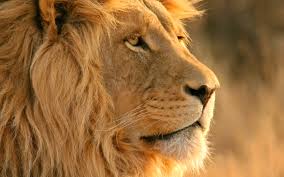This week, I learned a lot about lions that I previously didn’t know about. While my perception of lions may have negatively changed, I still believe that lions are one of nature’s most magnificent animals. Their claws and teeth are sharpened by evolution over the millennia, roaming the wild African land that is also home to countless other predators. While this animal is perhaps one of the deadliest animals on our planet, I believe that this danger highlights the need for a proactive strategy to properly conserve and maintain these animals. This beautiful mammal is not only symbolic of African wildlife itself, but also symbolic of the conflicting philosophies of the conservation of wildlife between Africa and the Western hemisphere.
Prior to this class, I knew that lions weren’t all that benign and charming that my childhood remembers them to be. As a kid, I remember watching the American classic, Lion King, a beautiful Disney movie that portrayed Simba to be a confident and virtuous character. When I re-watched the film this weekend, I recognized that almost every facet of the story was personified, to be in essence, a human story played by animal characters. While we will never know how Shakesphere might have thought of his Hamlet portrayed through an animated medium, I believe that what the Lion King did had effects on the youth that Disney may not have been cognizant of. The way that this movie portrayed lions made it seem like these animals were just like humans, with intelligence and a capability for empathy and justice, which has impacted how my generation (now adults) view these animals.
Lions in the real world, are not as human-like as people might believe them to be. We learned in class that lions are truly fearsome predators in the wild. They have a close knit social structure, but are very territorial with their land. There are prides of lions that have been documented throughout history to be violent, aggressive, and blood thirsty, not only with their natural prey, but also unsuspecting humans as well. We learned some of these infamous lions in class- engraved into history as blood thirsty monsters. I also learned that lions, are known to kill hyenas- not to eat them, but just to kill them. This made me realize that lions are much smarter than I previously thought. If they can understand the correlation between hyenas and the lack of food, I believe they might understand the correlation between humans and the lack of food.
One of the biggest problems that affect lions today is habitat loss. Lions are very territorial, which means that for different prides to coexist peacefully, there must be enough space for each pride to inhabit, without encroaching upon the other’s territory. With increasing rates of conversion of natural wild land to infrastructure, development, and agriculture, more and more prides are being dislocated, forced to move and trespass onto human land. From what I learned in class, conflicts can lead to violence between clans, often leading to infanticide. While this may in theory keep numbers down, negative human/lion interactions in African today is evidence that something isn’t working. When space is circumscribed, it forces lions to encroach upon human territory, often leading to brutal mauling and death. I believe one thing we can do is to implement a strategy that allows lion prides to stay small, circumscribing the amount of space each pride would need. This allows prides to co-exist peacefully and simultaneously taking into consideration the amount of space the lions are given. By working on such a proactive plan, we can more efficiently conserves lions, but also limit their interactions with humans in Africa.


